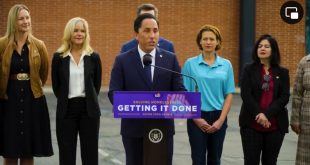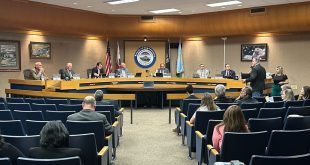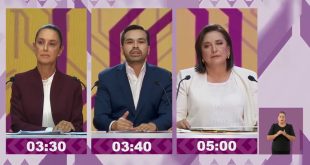
By: Mario Conde
SIATech El Centro Charter School is a tuition-free high school that gives students a chance to earn a standard high school diploma in El Centro. SIATech El Centro charter school is a fully-accredited charter school in El Centro, California.
SIATech serves students 16 to 24 years old who have not yet completed their high school education. In California, all SIATech sites are accredited by the Western Association of Schools and Colleges (WASC).
Assemblyman Eduardo Garcia and Workforce Development Director Miguel Figueroa spoke about legislation being made in the California legislature to help students reengage in education and job training to help them finish their education and get a good trained job.
Opportunity Youth are defined as individuals who have not yet attained their high school diploma and that now struggle with the barriers of returning to school to finish their education.
In 2014, California’s reported dropout rate was 11.6% and approximately 700,000 youths between the ages of 16 and 24 in California were not in school or work. Specifically, young adults of color make up nearly 74% of this “opportunity youth.” In California and throughout the country, a large proportion of opportunity youth are also boys and men of color.
Studies have shown that the combined taxpayer burden and social support burden for each student that doesn’t finish their high school education, reflecting earnings, crime, and health & welfare costs, amounts to $939,700 in 2012 and this burden is even greater for youths of California.
The Workforce Innovation and Opportunity Act of 2014 (WIOA) represents the single most significant change in federal workforce policy in over 15 years. Among other requirements, the WIOA mandates that state develop a plan for making workforce investments, set goals, and the report on their progress in meeting milestones to those goals. Future federal funding will be dependent on the state meeting established milestones leading to the goal.
AB 1111 establishes a competitive grant program for activities that address the needs of individuals who face multiple barriers to prepare for training, apprenticeship, or employment opportunities, which will lead to self- sufficiency and economic stability.
The program’s targeted populations include, but are not limited to, veterans, unskilled and low-skilled workers, out-of-school youth, foster youth, long-term unemployed, individuals with developmental and other disabilities, Native Americans, formerly incarcerated individuals, farmworkers, and other economically disadvantaged individuals.
Grant proposals are required to be submitted as a partnership between local workforce development boards and community-based nonprofit service providers with experience serving the targeted population. Proposals are required to also include specific measurement of success that illustrates how the assistance increased the individual’s skill-level and prepares them to take-on higher levels of training or obtain jobs.





